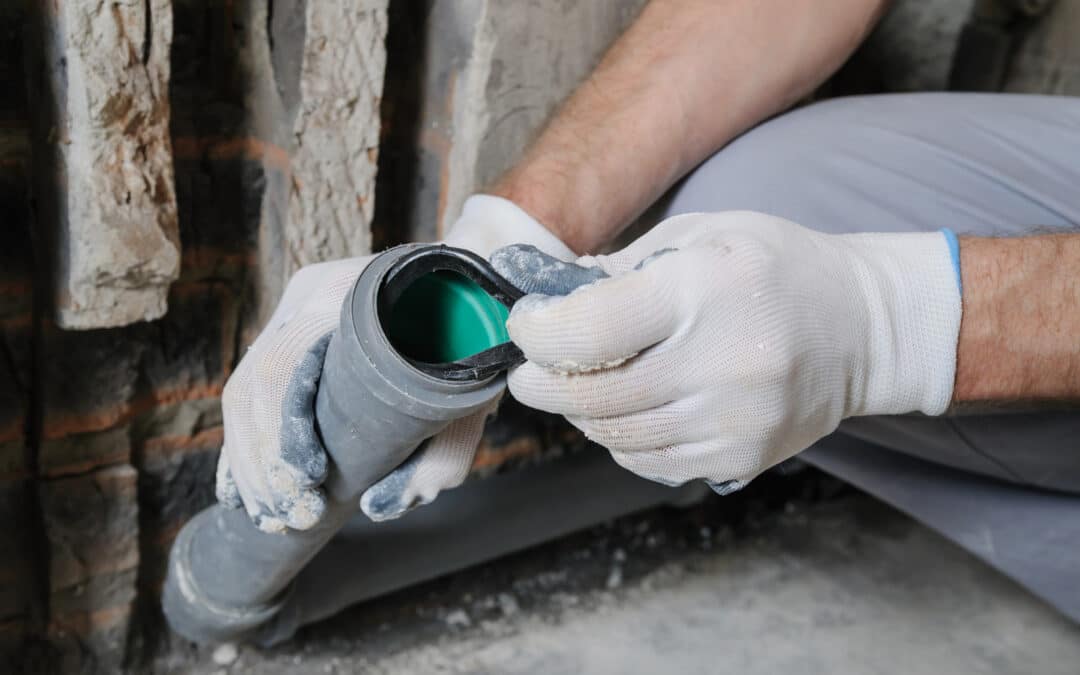We've noticed this article on How to Keep Trees from Ruining Your Plumbing listed below on the net and reckoned it made perfect sense to discuss it with you on this page.

Tree roots are a surprise yet substantial hazard to your pipes system. While trees improve the charm of your backyard and give color, their roots can ruin below ground pipes, bring about clogs, leaks, and pricey repair services. Understanding just how to prevent tree origins from damaging your plumbing is necessary for preserving a healthy and balanced and reliable system. This post checks out effective methods to protect your plumbing while preserving the elegance of your landscape.
Mount a Trenchless Drain Line
If your plumbing system is older or specifically at risk to root damage, updating to a trenchless sewage system line may be a rewarding investment. Trenchless systems use modern-day materials that are extra resistant to root breach and can be installed with very little disturbance to your landscaping. While this option calls for an upfront expense, it can conserve cash on repair work and upkeep in the long run.
Repair Service Cracked or Damaged Piping
Tree roots are most likely to attack pipes that are currently endangered. If your plumbing has fractures, loosened joints, or other weak points, it's important to fix these issues quickly. Modern pipeline fixing methods, such as pipe relining, can seal fractures and develop a smooth indoor surface area that is immune to root seepage.
Water Trees Purposefully
Tree roots frequently invade plumbing because they are searching for water. Providing your trees with adequate water through correct irrigation can lower the probability of roots looking for moisture from your pipes. Usage drip watering systems to guarantee deep and also watering, motivating roots to expand downwards as opposed to towards your pipes.
Use Root Obstacles
Installing physical root obstacles is a reliable way to secure your pipes. These barriers create an obstacle in between the tree origins and your pipelines, routing origins to grow deeper or away from the plumbing. Root barriers are commonly made of resilient materials like plastic or metal and ought to be set up by a professional to make sure maximum performance.
Frequently Examine and Maintain Your Pipes
Routine pipes inspections can recognize prospective troubles before they escalate. A professional plumbing can use advanced strategies like video pipeline inspections to detect origin breach or other vulnerabilities in your system. Arranging evaluations every year or semi-annually is particularly important if your home is surrounded by mature trees.
Normal upkeep, such as hydro jetting or drain cleaning, can likewise aid maintain your pipes clear and decrease the opportunities of root-related clogs.
Choose the Right Trees for Your Landscape
When planting trees near your home, choose types with less aggressive root systems. Some trees are well-known for their invasive roots, such as willows, poplars, and silver maples. Instead, consider growing trees with non-invasive origins, like:
Furthermore, plant trees at a risk-free distance from your pipes system. As a basic policy, plant trees at the very least as away from your home as their fully grown elevation.
Comprehend the Issue: How Tree Roots Damages Pipes.
Tree roots naturally choose dampness and nutrients, which makes your underground pipes an attractive target. Tiny fractures or loose joints in pipelines release dampness, drawing in roots that penetrate with these openings. Gradually, the roots enlarge, causing clogs, pipe breaks, and even complete system failing.
Common indicators of root invasion consist of:.
Early discovery and proactive steps are crucial to stop pricey damages.
Look For Specialist Help for Extreme Concerns.
If tree origins have actually already infiltrated your plumbing system, it's important to attend to the issue immediately. Specialist plumbers have the tools and know-how to get rid of root obstructions without harming your pipes. Techniques like hydro jetting, mechanical origin elimination, or pipe relining can efficiently recover your plumbing to optimum problem.
Consider Utilizing Root-Repellent Products.
Chemical root repellents can be an efficient deterrent for tree origins. These products produce a barrier around your pipes, avoiding origins from growing near them. Commonly used root repellents consist of copper sulfate and potassium hydroxide. Nevertheless, these chemicals should be applied carefully, as incorrect use can hurt neighboring plants and the setting.
Educate Yourself About Your Property's Plumbing Layout.
Understanding where your plumbing pipelines are located is crucial for effective prevention. Prior to growing brand-new trees or landscaping, speak with an expert to draw up your below ground utilities. This information will certainly help you intend your landscaping initiatives and prevent growing trees as well near to vulnerable locations.
Conclusion.
Protecting against tree origins from harming your pipes needs a mix of calculated preparation, regular maintenance, and professional aid. By choosing the ideal trees, mounting root barriers, and preserving your pipes system, you can enjoy the beauty of your landscape without jeopardizing the health and wellness of your pipelines. Taking positive steps today will save you from costly repair work and ensure your plumbing remains in outstanding condition for years to come.
How To Keep Tree Roots From Wrecking Your Sewer Line
Determine if you have trees near a sewer line
Houses are required to have sewer clean out caps in 2 places. These are typically either white PVC or Black ABS pipes sticking out of the ground or sometimes in a recessed box in the lawn. One should be within a few feet of your foundation wall and the other should be within 13 feet of the curb. In most cases the pipe will travel underground this general line of sight.
Get your sewer line inspected
Now that you know a tree is near the sewer line, you need to see if roots have invaded.
The best way to do this: Get a professional plumber to inspect the sewer line using a camera probe.
While you could wait to get the inspection until you notice the signs of a sewer line break, getting the inspection now will nip problems in the bud and possibly save you thousands of dollars.
Remove roots and repair as needed
Cutting up the roots in the pipe using a hydro cutter or a powered sewer auger. Killing off the root structure by using chemicals to temporarily stop their growth. One option is Root-X, a herbicide that can: Penetrate the roots, killing them on contact. Stick to the pipe walls, preventing re-growth for up to three years. Repairing the sewer pipe as needed. Mr. Plumber uses a No Dig technology that makes repairing sewer pipes easy and non-invasive, so you don t have to destroy your landscape. https://www.mrplumberatlanta.com/help-guides/how-to-keep-tree-roots-from-wrecking-your-sewer-line
We were shown that editorial about 5 Tips to Prevent Tree Roots in Sewer Pipes from a buddy on a different web blog. I beg you take the opportunity to distribute this blog post if you enjoyed it. Thank you for going through it.
 Emilio Estevez Then & Now!
Emilio Estevez Then & Now! Traci Lords Then & Now!
Traci Lords Then & Now! Bernadette Peters Then & Now!
Bernadette Peters Then & Now! McKayla Maroney Then & Now!
McKayla Maroney Then & Now! Robin McGraw Then & Now!
Robin McGraw Then & Now!